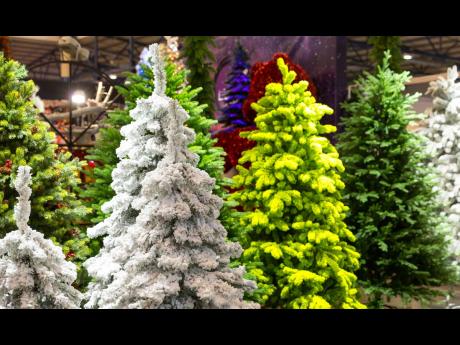Choosing the most sustainable Christmas tree
Every year, people around the world buy millions of Christmas trees, and many more pull an artificial tree out of storage for the season. Generally, most households typically have some kind of Christmas tree during the holidays.
People often ask which is more sustainable – a real tree or an artificial one? It’s a big debate, and the answer depends on who you ask and which factors you consider.
A more useful question is: How do I find the most sustainable tree of the kind I want to get?
I’m a forestry professor who works on issues of sustainability. There are advantages and disadvantages to both cut trees and artificial trees.
Here are some tips to consider for each.
IF YOU’RE BUYING A LIVE CHRISTMAS TREE
When Christmas trees are alive and growing, they pull carbon dioxide from the air and use it as the building blocks of their wood. That keeps the greenhouse gas out of the atmosphere, where too much carbon dioxide contributes to global warming.
This process stops once the tree is harvested. And at some point, the cut tree begins to decompose and releases that carbon again.
On the positive side, the tree’s root systems will continue to store carbon for some time, and new trees are typically planted to continue the cycle.
So, how do you find the most sustainable live tree?
THINK ABOUT THE TREE’S ORIGIN
The most common Christmas tree varies by region. Consider how far you have to drive to get one, bearing in mind that a long drive and transportation is a major source of greenhouse gas emissions.
There are many wonderful species you can get from nearby sources. Of course, the lowest-impact cut tree is the one you grow in your own yard.
Also, look for nurseries that protect their soils from erosion and minimize harm to surface and groundwater from runoff that can include fertilizers or pesticides.
DISPOSING OF YOUR LIVE TREE
What you do with your tree after the holidays also matters.
Recycling is far better than leaving the wood to decompose in a landfill. Because of the nature of most landfills, anaerobic conditions will ultimately exist, and decomposition will result in the release of methane gas, which is many times more potent than carbon dioxide at warming the atmosphere.
Look for a community or retailer that offers to chip the tree or shred it to create mulch or for use in animal stalls. This keeps it out of landfills and serves a purpose.
Composting is another option. Trees can be used as an erosion barrier for sand or soil or as fish habitat in rivers. They can even be donated to farms or they can be tossed into a bio-burner to provide heating for buildings.
Alternatively, consider cutting the tree into smaller pieces and letting it rot in the open, placing it in an out-of-the-way place in your yard. It will provide a temporary home for many insects, birds and wildlife.
ARTIFICIAL TREES HAVE DIFFERENT PROS AND CONS
Artificial trees also have advantages – they can last for years and require almost no maintenance. However, they are mostly a petroleum-based product, and when you throw one out, it can take hundreds of years to decompose.
If you plan to buy an artificial Christmas tree – maybe you have allergies like I do, or you’re concerned about cost – here are some suggestions to reduce your carbon footprint.
REUSE, REUSE, REUSE
The number one way to reduce emissions with an artificial tree is to reuse it for years. Reuse avoids the carbon impact of producing, packaging and shipping a new one. The break-even point – when your artificial tree’s emissions match the emissions of buying a live tree each year – varies from as little as four years to as many as 20 years, depending on the factors considered.
Many artificial trees are built to last 30 years or more. My family has had one for 25 years. To lengthen its life span, take care when putting it up and storing it. If the tree gets damaged, see if you can find replacement parts rather than replacing the entire tree.
PAY ATTENTION TO THE SOURCE
About 80 per cent of artificial Christmas trees are manufactured in China. Shipping is pretty efficient, but the tree still needs to get to and from the ports.
Some manufacturers are making trees out of recycled materials, at least in part, which helps reduce the tree’s carbon footprint. Shorter artificial trees, or designs with less foliage, also use less plastic.
The type of plastic used also affects the amount of petroleum used. Some research has suggested that plastic foliage made from polyethylene plastic molds may have a lower impact than traditional foliage made out of polyvinyl chloride, or PVC.
GIVE THE FAKE TREE A SECOND LIFE
If you no longer like your artificial tree – maybe it’s too big for a new home – try reselling the tree or donating it to a charity, thrift store, nursing home or children’s home so that others can continue to use it.
You can also get creative and repurpose the old tree limbs into decorative wreaths, garlands or toy trees for a hobby train set.
LIGHTING ALSO MATTERS
With any holiday tree, be judicious about turning off lights when no one is around and at night. Consider using fewer lights. LED lights are more energy efficient than incandescent lights.
Whatever you do, try to make more sustainable choices and reduce your carbon footprint when you can.
Curtis VanderSchaaf is a forestry scientist writer for The Conversation


